The purpose of sustainable design and green building is to achieve sustainable living. To do this, we attempt to make best possible use of the assets at hand. That could mean designing and building from scratch. It could also mean taking an existing dwelling and nudging it in the direction of sustainability. It’s an imperfect process and takes time. It’s only natural that we look for shortcuts to living green. Here’s one:
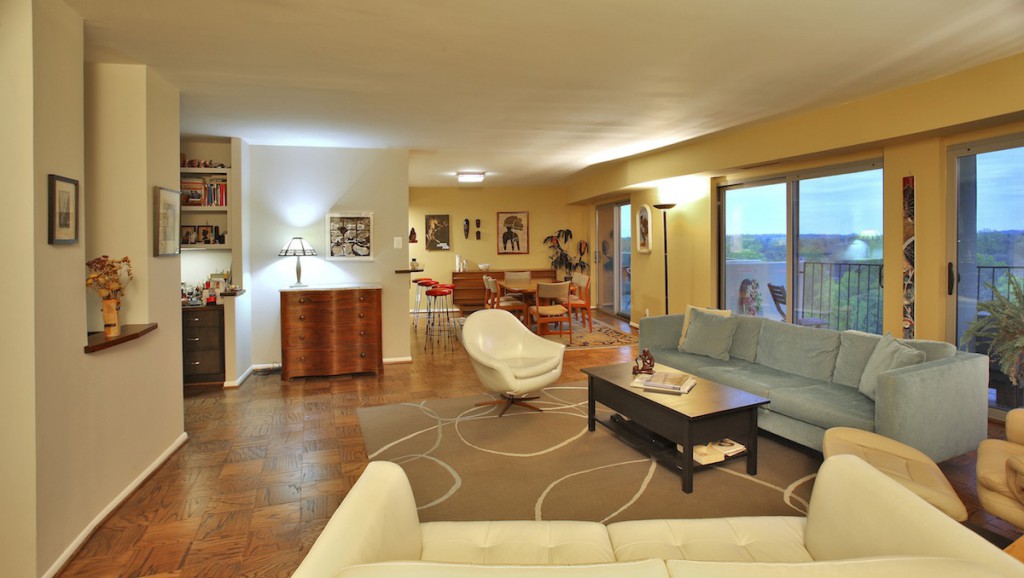
Downsizing and Sustainable Living
Do what these people did. When the time is right, you sell the single-family detached house and buy a condo. They kissed their lovable, drafty old Victorian goodbye. With the kids fledged, the careers on cruise control— they didn’t need it anymore. So they bought a dowdy condo on the upper floors of Parkside Plaza in Silver Spring and transformed it into their own cool, colorful, light-filled living space.
What’s sustainable or green about living in a hi-rise, you say? Read on.
A Lazy Man’s Way To Living Green
Depending on the year built, condominium buildings may be burdened by outdated or inefficient systems. And yet, they start out with two big gold stars on the list of sustainable design features: Energy Efficiency and Sustainable Land Use
- Energy Efficiency. A free-standing house is exposed to the elements on all sides plus the roof. The typical apartment shares three of its walls (plus floor and ceiling) with other units or common areas. So, right there without lifting a finger you’ve just become 80% more energy efficient because only one wall has to face the elements.
- Sustainable Land Use. The other big painless step toward sustainability has to do with land conservation. A single-family house occupies at least 5,000 or 6,000 square feet of land. In a multi-family building like Parkside Plaza, 250 families occupy about four acres. That’s an average of less than 700 square feet per family.
So, if you were a complete deadbeat and did nothing else to ease your footprint on our tender Earth, you’d be ahead of the game with this one simple move. And why stop when you’ve started out so far ahead?
That brings us to the green remodeling story. This couple found a bleak, worn out wreck of a place and loved it into a work of lifestyle art.
Take a look at what they walked into:
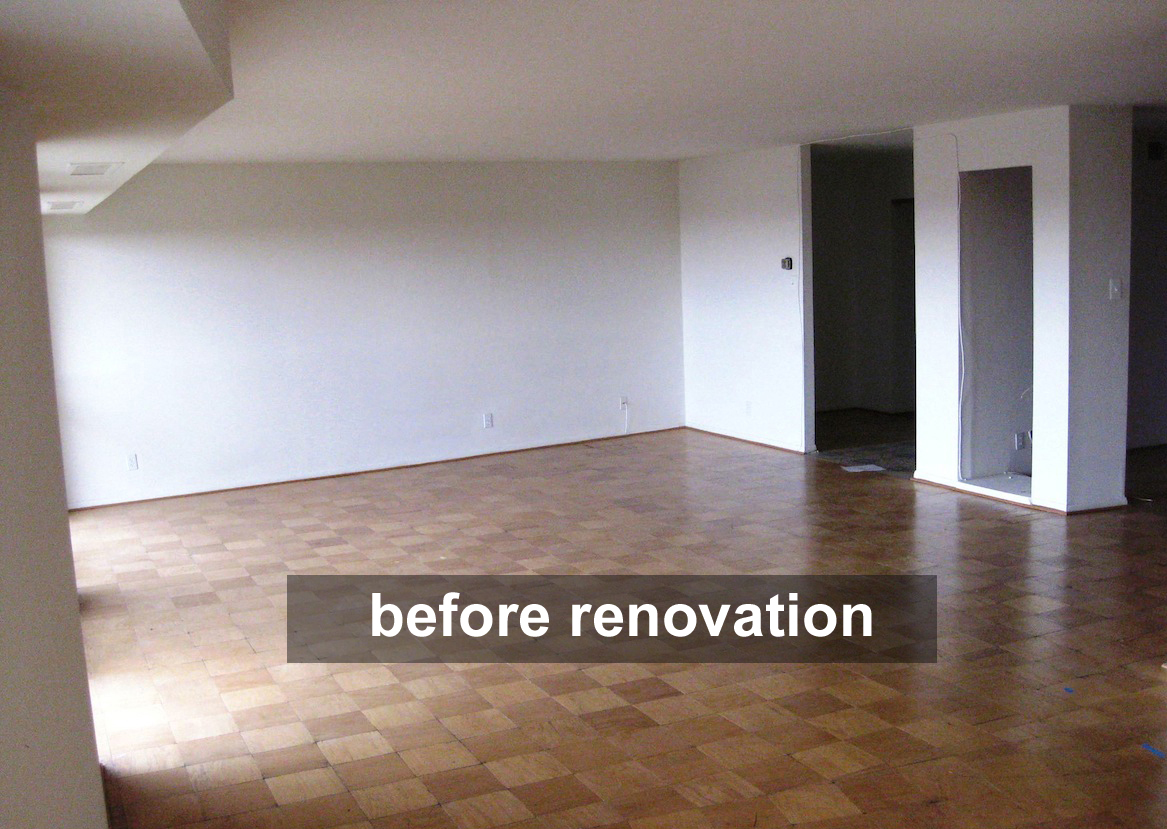
Where others may have flinched and fled, they saw potential. Here’s the way they went with it:
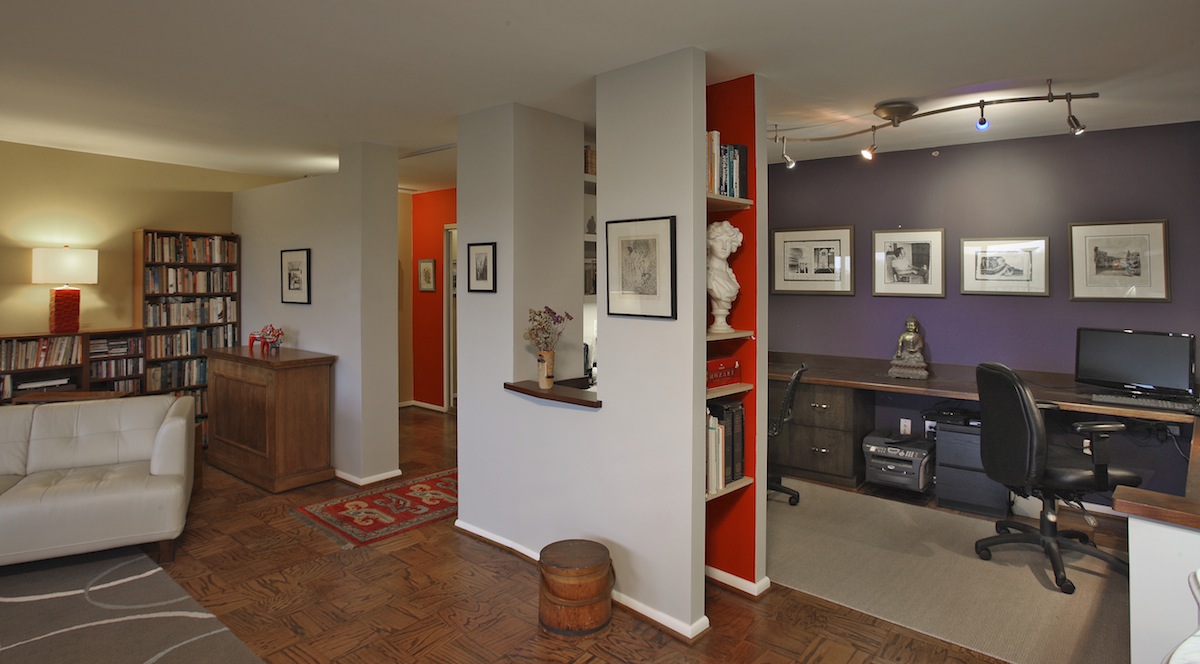
One Plus One Makes One Big One
When the Parkside Plaza building converted to condominiums around 1988, several pairs of one-bedroom apartments on the top floors were combined to create spacious luxury units.
Except….
The apartments had been stuck simply (and oddly) together, the possibilities of the combined spaces left unexplored. As a result, the space lacked definition or any unifying themes. Closets and storage spaces were haphazard. Nothing related to anything else.
And…..
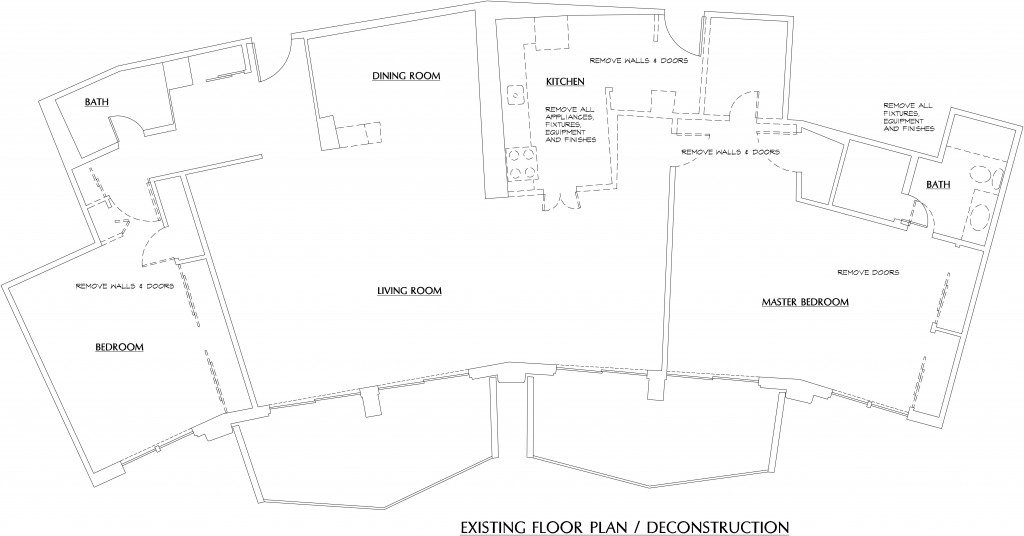
The original single glazed windows and doors leaked, rattled and whistled in the wind. The heating/cooling units were choked with crud and they leaked—ruining the floors.
And, finally…
The kitchen. It was one of those kitchens made so long before we learned how to “do” kitchens that it doesn’t seem fair to criticize. Boxed off from the main living area, it cried out to be set free of confining partition walls. It is enough to say it was intolerable to our Empty Nesters.
Accentuate the Positive
Was there anything good about the place? Yes! It was luxuriously spacious. Truly splendid, however, were the floor to ceiling sliding glass doors framing a wall of sky beyond twin over-sized balconies. This! This was worth the work. And work there was.
Even with so much wrong, the renovation relied more on the scalpel than the wrecking ball. As shown in the detail below, partitions and doorways were reshaped and finessed:
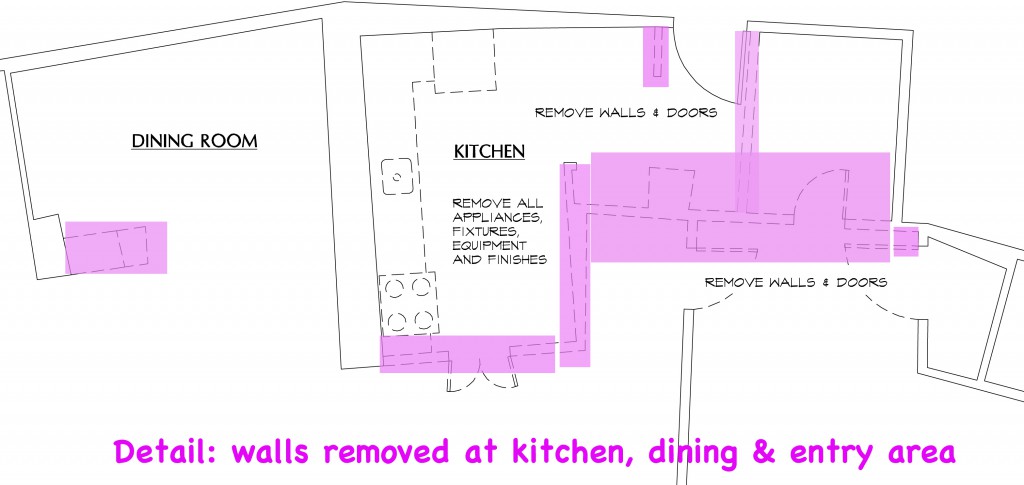
The redesign would focus on defining functional spaces for work, hobbies, and overnight guests. It would bring order and reason to bear upon unreasonably bad feng shui.
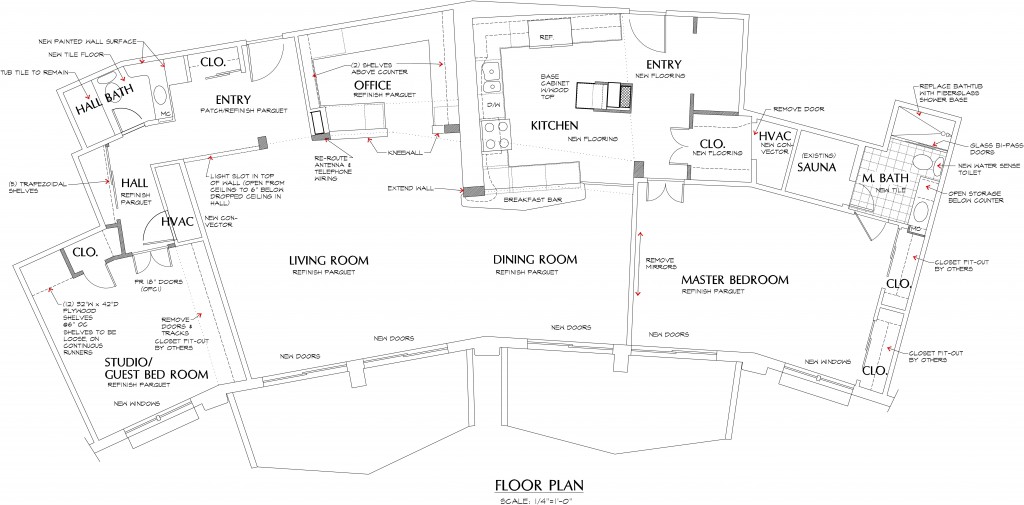
Making Sense of Space: Interior Realignment
Transitions were clarified. Storage was optimized. What had been a dark and creepy passageway to the second bedroom was illuminated by interior windows and divided lite bedroom doors.
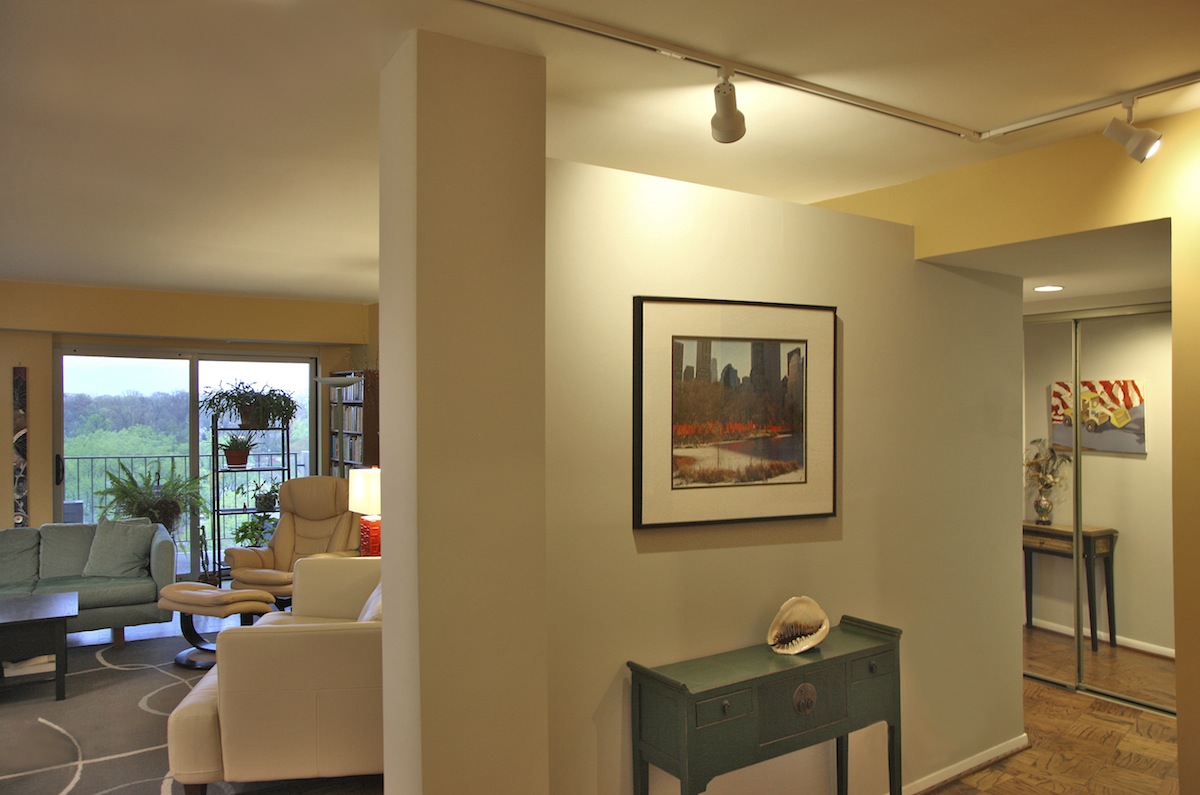
The kitchen was fully integrated into the adjacent living areas.
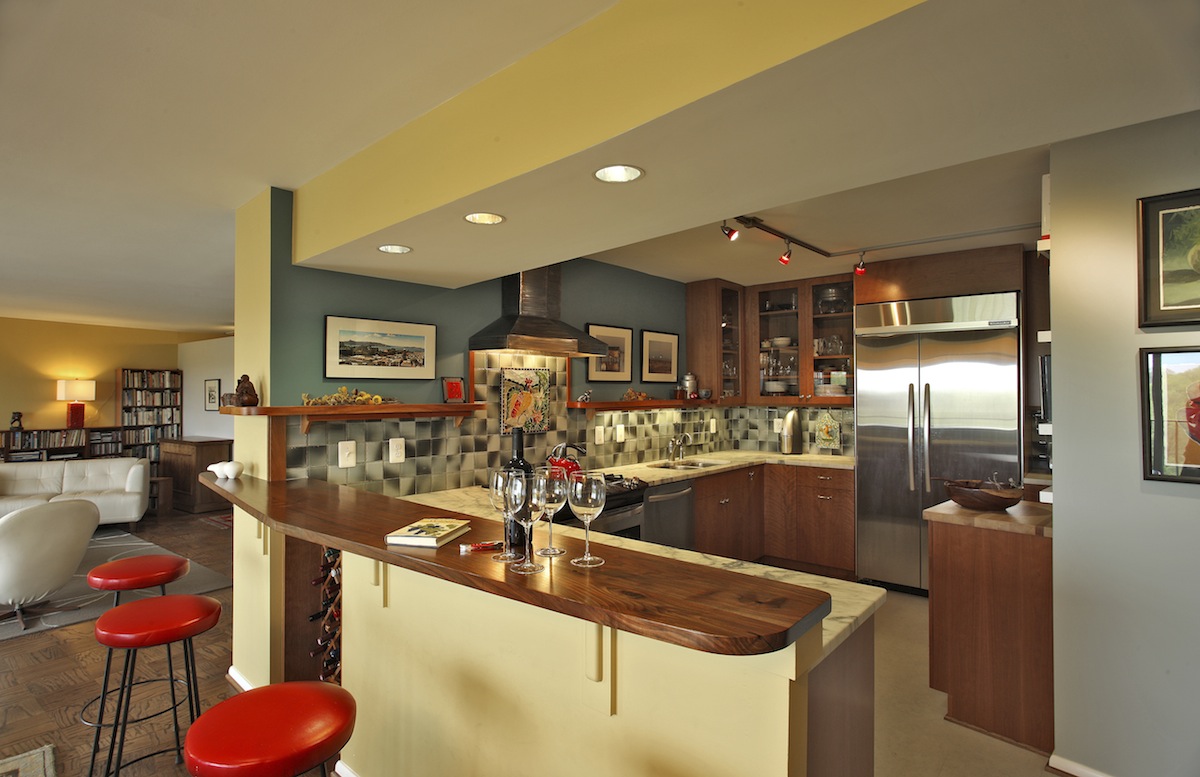
Repurposing Found Materials
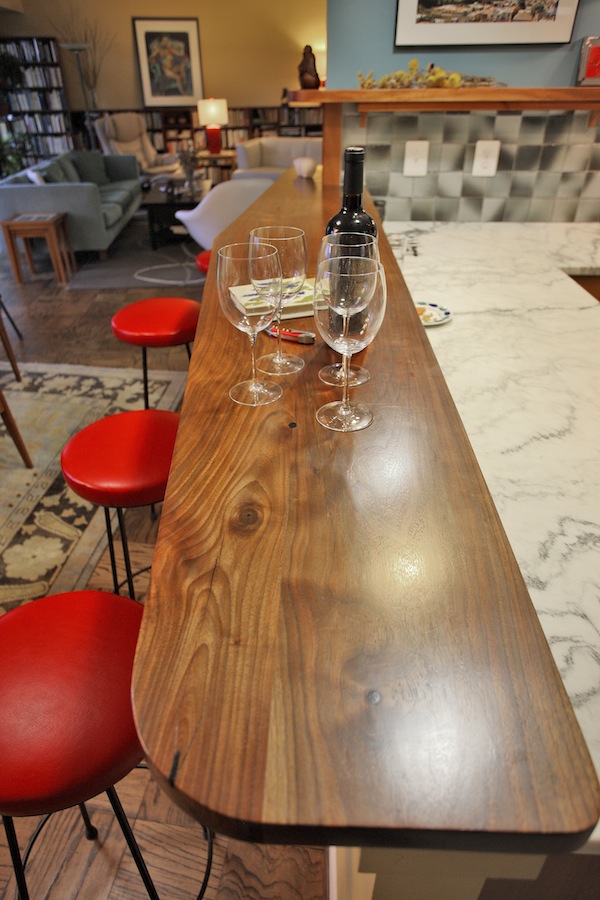
Materials were selected with sustainability in mind. These included wood counters and shelves crafted from urban harvest walnut and cherry. To ensure healthful indoor air quality, cabinets were made with zero formaldehyde materials and finished with no-VOC coatings.
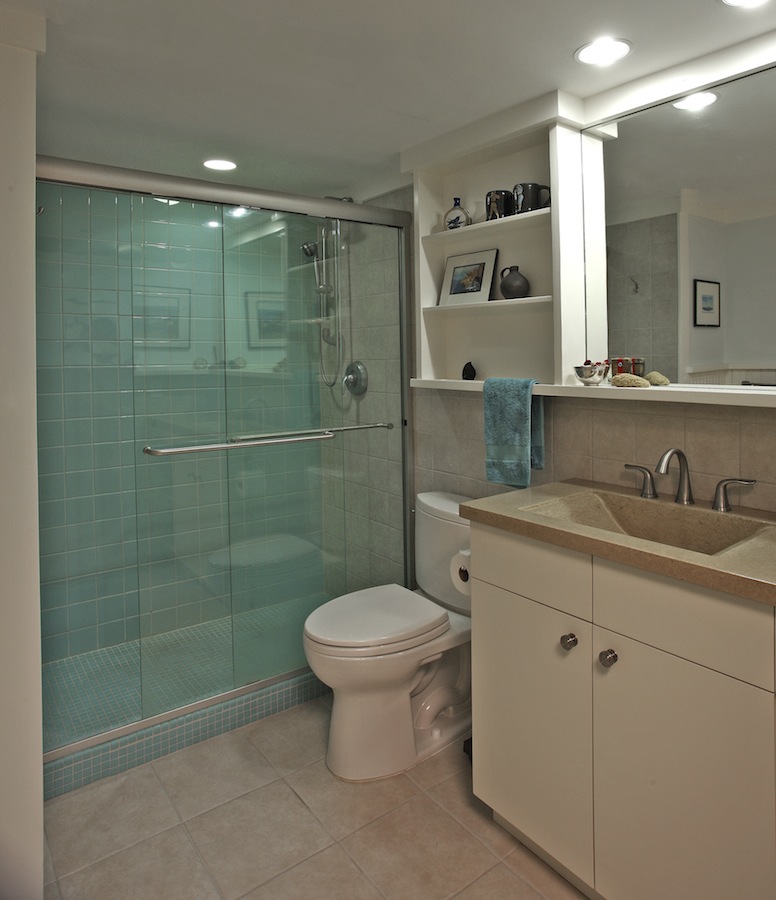
In the baths: The vanity cabinet (above) is capped with locally fabricated concrete. The other bath (not shown) features a vanity made from an heirloom (re-used) cabinet, topped with soapstone from an abandoned quarry in Virginia.
Click through to see more photos of this thoughtful transformation and to learn about more of the green features.
Learn more at Abrams Design Build.
Photos courtesy Kenneth M Wyner


